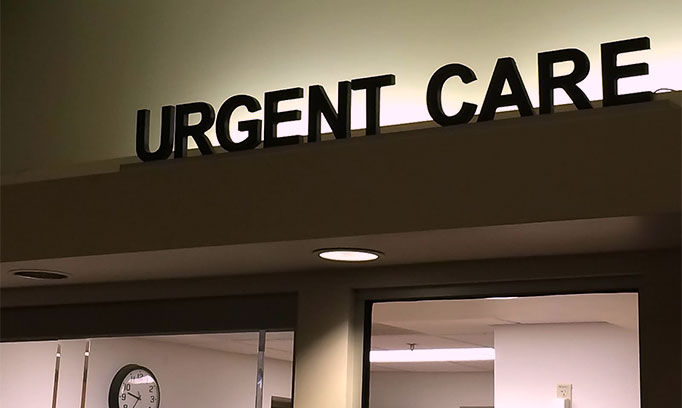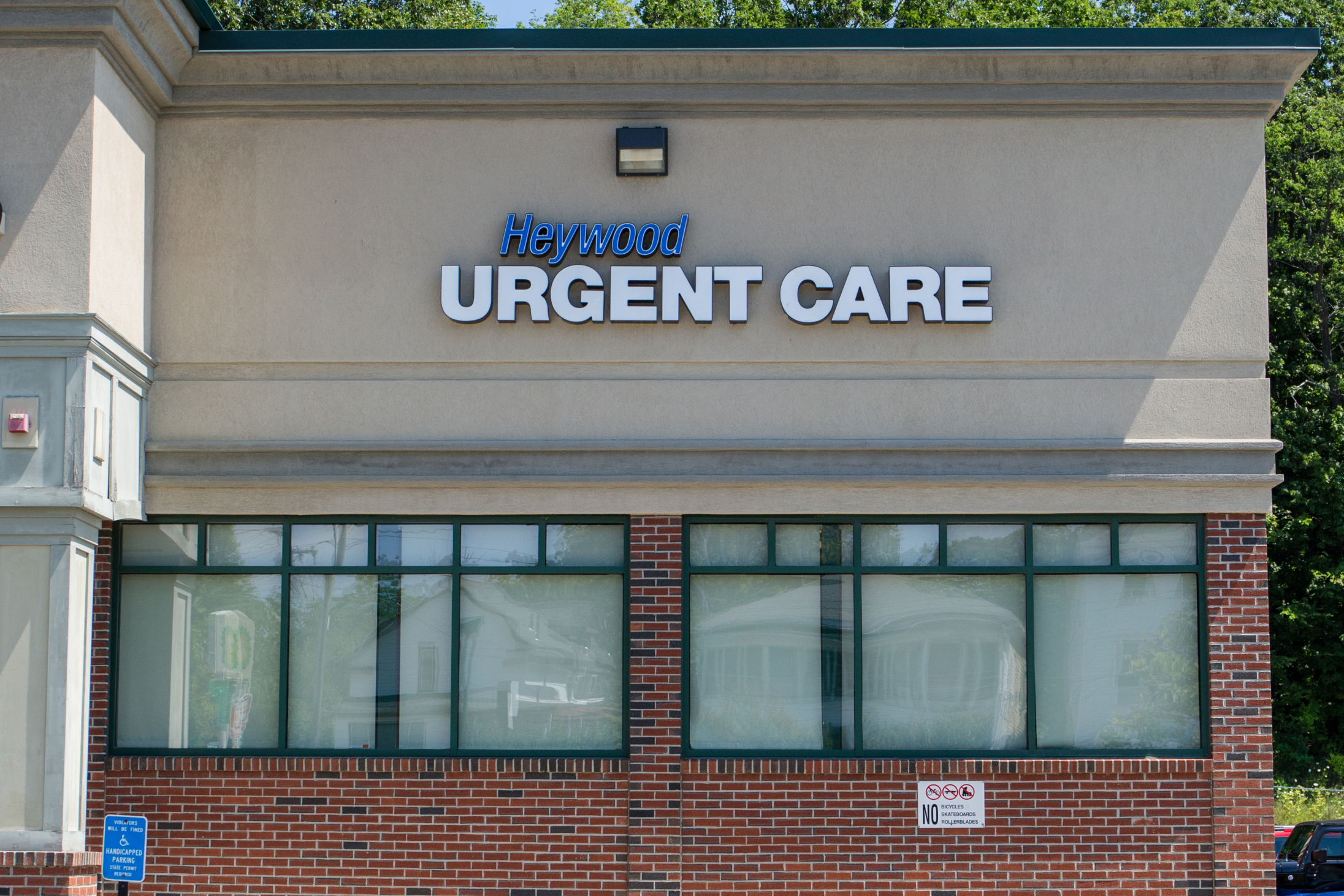The Relevance of Urgent Care Centers in Connecting the Void Between Main Care and Emergency Situation Solutions
Immediate care facilities have become an important part of the medical care landscape, effectively dealing with the important demand for immediate clinical interest without turning to emergency situation solutions. By offering care for non-life-threatening conditions, these centers assist to minimize the burden on emergency clinic and improve patient access to timely treatment. Their prolonged hours and varied solutions accommodate an expanding populace looking for choices to traditional health care. The evolving role of immediate care centers raises important questions about their combination within the broader healthcare system and the effects for client results and resource allowance.
Overview of Urgent Treatment Centers
Urgent treatment facilities have actually become an essential component of the medical care shipment system, giving easily accessible medical solutions for non-life-threatening conditions. These centers generally run outside common office hours, offering individuals an alternative to emergency situation rooms and health care settings. Individuals seeking immediate treatment commonly present with problems such as minor injuries, infections, or ailments that need punctual focus however do not posture an instant threat to life or arm or leg.
Urgent treatment facilities are staffed by a range of healthcare professionals, including doctors, registered nurse practitioners, and doctor aides, that are geared up to identify and treat numerous clinical issues. They frequently feature diagnostic tools such as X-ray makers and laboratory solutions, enabling them to provide extensive care on-site.
The establishment of immediate treatment centers has been influenced by the raising need for timely clinical solutions in a fast-paced society, where individuals might struggle to protect consultations with medical care companies. Therefore, these facilities intend to relieve congestion in emergency departments, improving overall health care performance. Additionally, urgent care centers typically work as a bridge between health care and emergency solutions, making certain that individuals obtain proper treatment customized to their certain medical needs.

Advantages of Urgent Care Provider
Accessing timely clinical treatment is a significant benefit of immediate care solutions. These facilities provide immediate attention for non-life-threatening conditions, efficiently lowering wait times contrasted to traditional emergency departments. Patients seeking take care of small injuries, ailments, or immediate health concerns can acquire treatment without the long delays usually connected with healthcare facility brows through.
Another key advantage is the prolonged hours of operation. Numerous immediate care centers are open evenings and weekend breaks, suiting individuals who might not be able to visit their health care company during typical office hours. This flexibility makes immediate care an obtainable choice for those with hectic schedules or sudden health and wellness problems.
Furthermore, immediate care facilities frequently provide a vast variety of solutions, consisting of analysis screening, X-rays, and basic laboratory solutions. This detailed strategy enables for fast diagnosis and therapy, boosting person fulfillment.
Additionally, immediate treatment facilities are commonly a lot more economical than emergency situation spaces, making them an eye-catching alternative for individuals without insurance policy or those with high-deductible plans. In general, immediate treatment solutions play a vital role in offering available, prompt, and budget-friendly healthcare.
Comparison With Medical Care
Typically, people often weigh their choices between immediate treatment facilities and medical care service providers when seeking medical focus. Both serve necessary functions in the health care system, yet they vary dramatically in access, extent, and expense.
Medical care companies are commonly the initial point of call for individuals, concentrating on lasting health administration, precautionary treatment, and persistent disease management. They use connection of treatment, fostering a patient-provider partnership that enables for comprehensive health evaluations and tailored therapy plans. Nevertheless, setting up an appointment can be lengthy, typically requiring days or weeks ahead of time.
On the other hand, immediate treatment facilities provide prompt take care of non-life-threatening conditions that need prompt interest, such as small injuries or infections. These centers often operate beyond conventional office hours, suiting individuals who may not be able to visit their health care company throughout normal business times. Furthermore, immediate treatment is usually much more affordable than emergency clinic sees, making it an attractive choice for those with restricted healthcare accessibility.
Inevitably, while urgent treatment facilities and medical care companies both contribute to client wellness, they accommodate distinct needs, making it vital for individuals to figure out which alternative best aligns with their circumstances.
Emergency Situation Services Interaction
The communication between urgent treatment facilities and emergency situation services is an important element of the health care landscape, particularly when people face circumstances that might rise in seriousness. Immediate care centers serve as a bridge in between key treatment and emergency divisions, addressing non-life-threatening problems that require instant attention. This collaboration boosts patient outcomes and optimizes source allowance within the health care system.
When people present with not lethal yet immediate concerns, urgent care facilities can effectively handle their needs, reducing congestion in emergency clinic. When a patient's problem goes beyond the scope of urgent care therapy, Facilities furnished with analysis capacities can facilitate prompt recommendations to blog here emergency services. This seamless communication assists make certain that people get the appropriate level of treatment without unnecessary delays.
In addition, effective communication in between urgent care providers and emergency situation services is essential. Sharing individual info and therapy histories promotes collaborated care, reducing the threat of redundant examinations and procedures. As medical care remains to develop, the dynamic partnership in between urgent care centers and emergency situation services will certainly play a critical role in improving patient treatment performance, complete satisfaction, and overall wellness results within the area.
Future of Urgent Treatment Facilities
As healthcare demands develop, the future of immediate care facilities is poised to become significantly important to the overall clinical environment (Urgent Care). These facilities are most likely to broaden their roles by including sophisticated innovations, such as telemedicine, artificial intelligence, and digital health record integration. This will my link boost patient access and enhance care sychronisation between immediate care, main treatment, and emergency solutions
Moreover, urgent care facilities are expected to expand their solution offerings to include precautionary care and chronic disease monitoring. This change will certainly position them as important parts in taking care of population health, lowering the concern on emergency departments, and addressing gaps in health care schedule.
The growing fad of value-based treatment will better accelerate the change of urgent treatment centers, triggering them to concentrate on individual outcomes and complete satisfaction. Facilities may likewise adopt joint technique designs, functioning very closely with professionals and health care carriers to guarantee detailed patient monitoring.
Conclusion
To conclude, immediate care facilities serve an essential feature in the healthcare system by giving check out here instant accessibility to therapy for non-life-threatening conditions, efficiently easing pressure on emergency situation services. Their expanded hours and diverse series of services improve person convenience and fulfillment, while likewise making sure proper care shipment. As healthcare needs continue to evolve, the function of urgent treatment centers will likely become significantly considerable, additional bridging the void in between health care and emergency situation services.
The establishment of immediate treatment facilities has actually been influenced by the enhancing demand for timely clinical services in a hectic culture, where patients may struggle to secure visits with primary care providers. Additionally, urgent care facilities usually offer as a bridge in between key treatment and emergency services, ensuring that clients get proper care tailored to their details clinical needs.
Several immediate treatment facilities are open evenings and weekends, accommodating people that may not be able to visit their key treatment carrier during basic workplace hours (Urgent Care). As health care proceeds to progress, the vibrant relationship between urgent treatment centers and emergency services will play an essential function in enhancing client treatment performance, fulfillment, and overall wellness outcomes within the neighborhood
